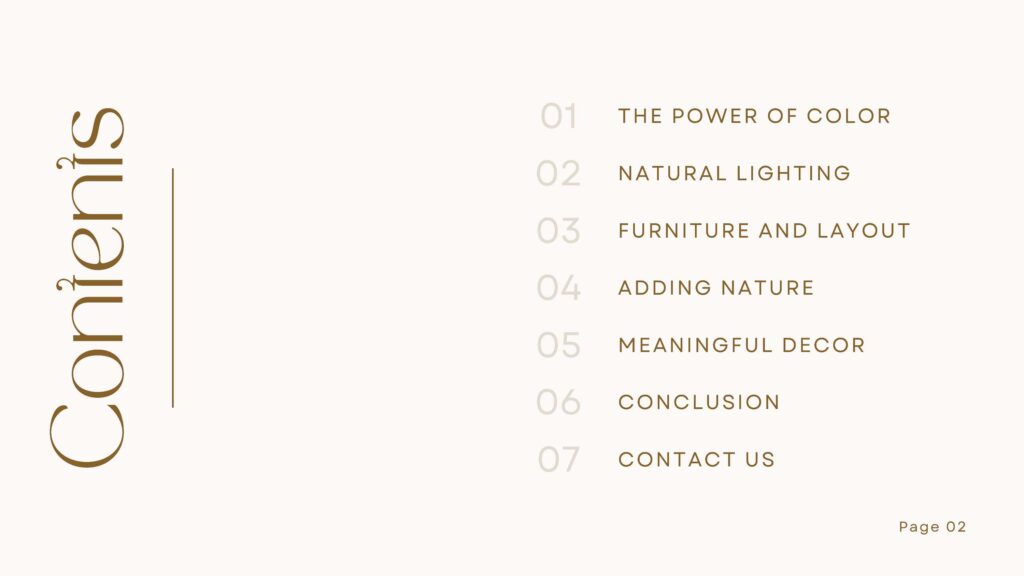
Table of Contents
Interior design isn’t just about making your home look good; it can also have a profound impact on your mental and emotional well-being. This beginner’s guide will walk you through the basics of how interior design affects your mental and emotional health, with practical tips to create a more harmonious living environment. Let’s explore how the spaces we live in can influence our mood, productivity, and overall happiness.
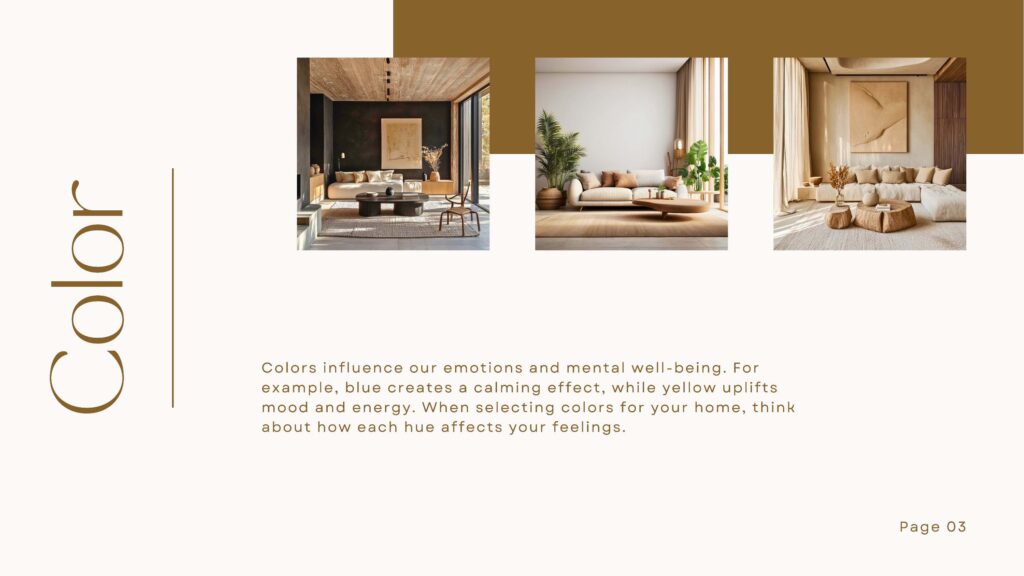
1. The Power of Color
Colors have a significant impact on our emotions and mental state. For instance, blue is known for its calming effects, while yellow can boost your mood and energy levels. When choosing colors for your home, consider how different hues make you feel.
– Calming Colors:
Soft blues, greens, and lavenders can create a serene atmosphere, perfect for bedrooms and bathrooms.
– Energizing Colors:
Bright yellows, oranges, and reds can add vibrancy to living rooms and kitchens.
– Neutral Colors:
Whites, grays, and beiges provide a clean, balanced backdrop that can be easily accented with other colors.
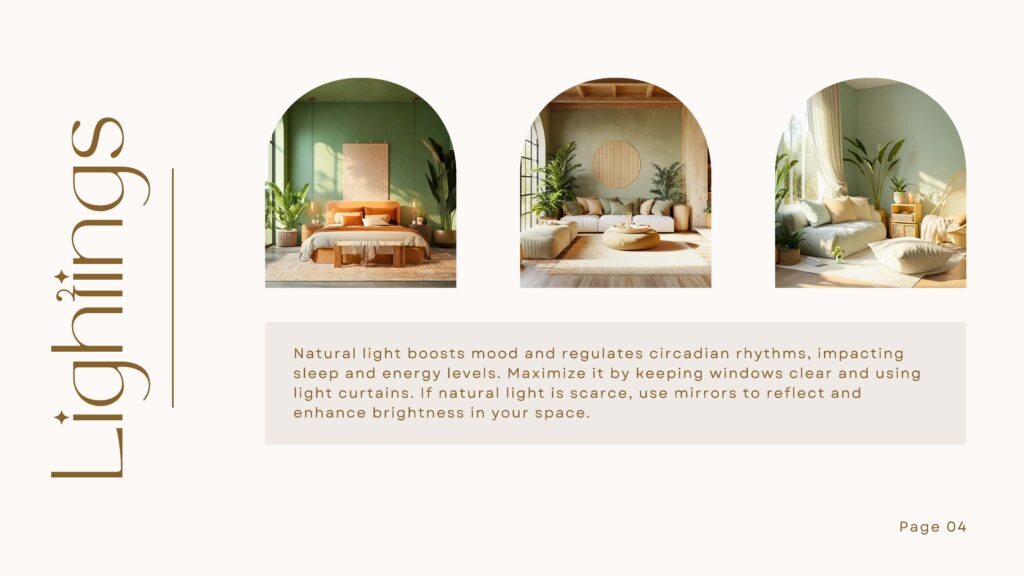
2. Natural Light and Its Benefits
Natural light is a powerful mood enhancer. It helps regulate our circadian rhythms, which in turn affects our sleep patterns and overall energy levels. Make the most of natural light by keeping windows unobstructed and using light, airy curtains. If natural light is limited, consider using mirrors to reflect light and brighten up your space.
– Maximize Windows:
Keep window treatments minimal to allow maximum light.
– Use Mirrors:
Place mirrors opposite windows to reflect light and make rooms feel larger.
– Artificial Lighting:
Use warm, soft lighting in the evenings to create a cozy atmosphere.
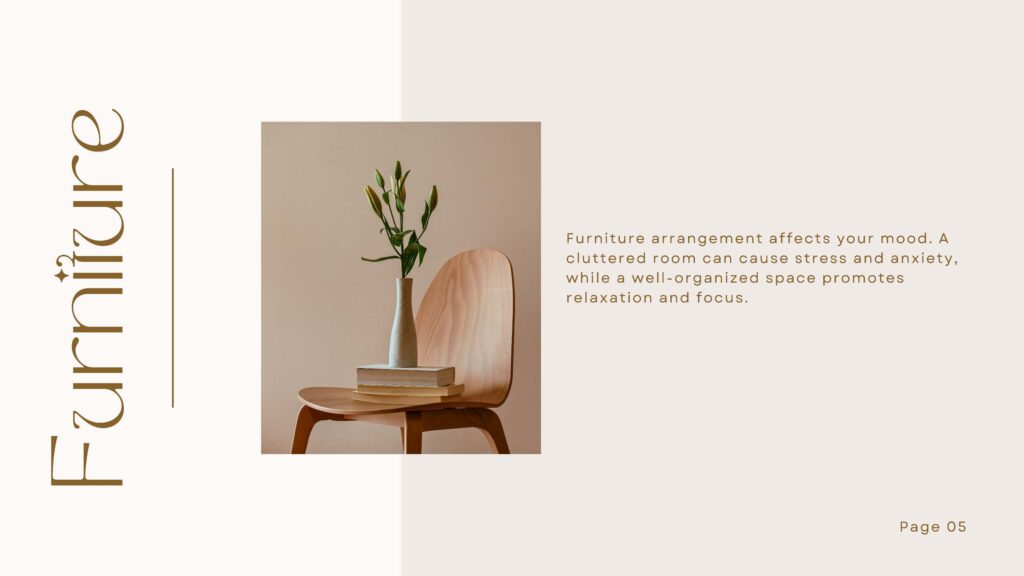
3. The Role of Furniture and Layout
The way you arrange your furniture can significantly impact how you feel in a space. A cluttered room can lead to feelings of stress and anxiety, while a well-organized space can promote relaxation and focus.
– Declutter:
Keep only what you need and love. Donate or sell items that no longer serve a purpose.
– Functional Layout:
Arrange furniture to create a natural flow and ensure easy movement.
– Comfortable Seating:
Invest in comfortable seating that supports good posture and relaxation.
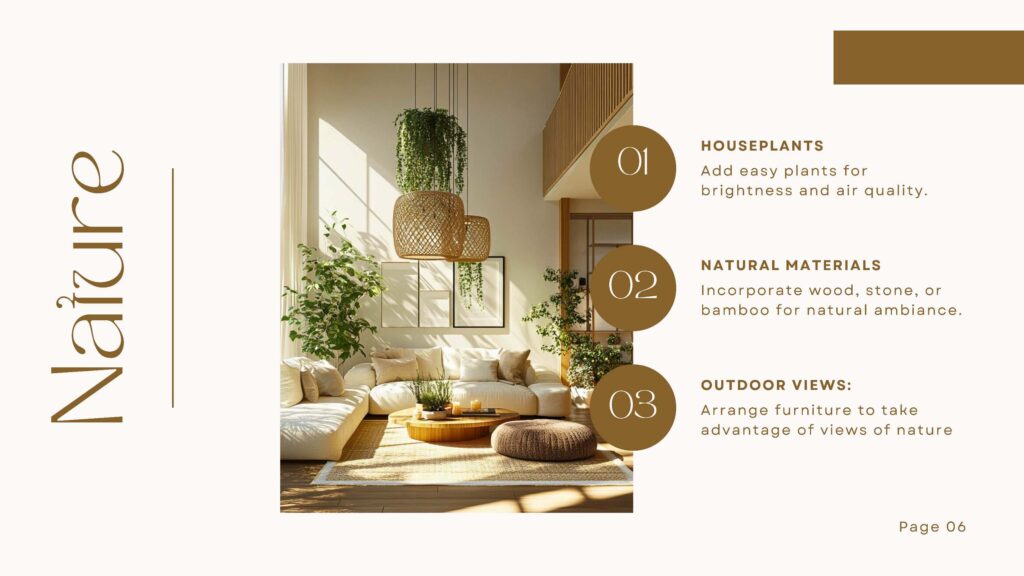
4. Adding Nature to Your Space
Bringing elements of nature into your home can have a calming effect and improve your mental health. Plants, natural materials, and views of the outdoors can all contribute to a more peaceful environment.
– Houseplants:
Add greenery to your space with easy-to-care-for simple plants like succulents or ferns can brighten up a room and improve air quality.
– Natural Materials:
Use materials like wood, stone, or bamboo to give your home a natural touch.
– Outdoor Views:
If possible, arrange furniture to take advantage of views of nature.
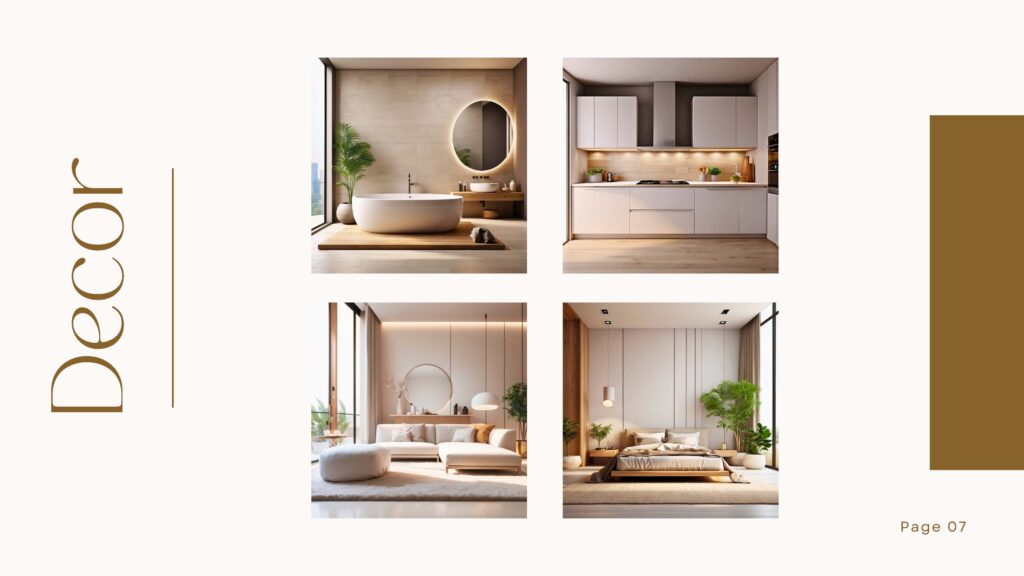
5. Personal Touches and Meaningful Decor
Your home should reflect your personality and interests. Surrounding yourself with items that have personal meaning can boost your mood and create a sense of belonging.
– Personal Photos:
Display photos of loved ones and memorable moments.
– Artwork:
Choose art that resonates with you and makes you happy.
– Sentimental Items:
Incorporate items that have sentimental value, such as heirlooms or travel souvenirs.
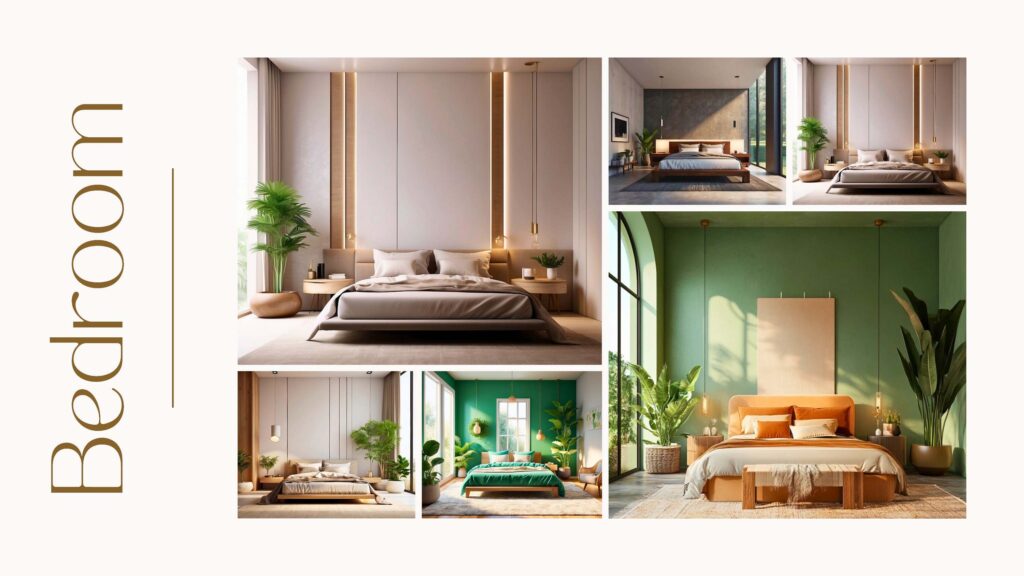
6. Creating a Relaxing Bedroom
Your bedroom should be a sanctuary where you can unwind and recharge. Pay special attention to this space to ensure it promotes restful sleep and relaxation.
– Comfortable Bedding:
Invest in high-quality bedding that feels good against your skin.
– Soothing Colors:
Use calming colors like blues and greens to create a peaceful atmosphere.
– Minimal Distractions:
Keep electronics and work-related items out of the bedroom to create a restful environment.
Conclusion
Interior design is more than just aesthetics; it’s about creating spaces that support your mental and emotional well-being. By paying attention to color, light, furniture layout, natural elements, personal touches, and your bedroom environment, you can create a home that not only looks good but also feels good. Start small, and gradually make changes that enhance your living space and, ultimately, your quality of life. Happy decorating!






3 thoughts on “How Interior Design affects Your Mental and Emotional Health”